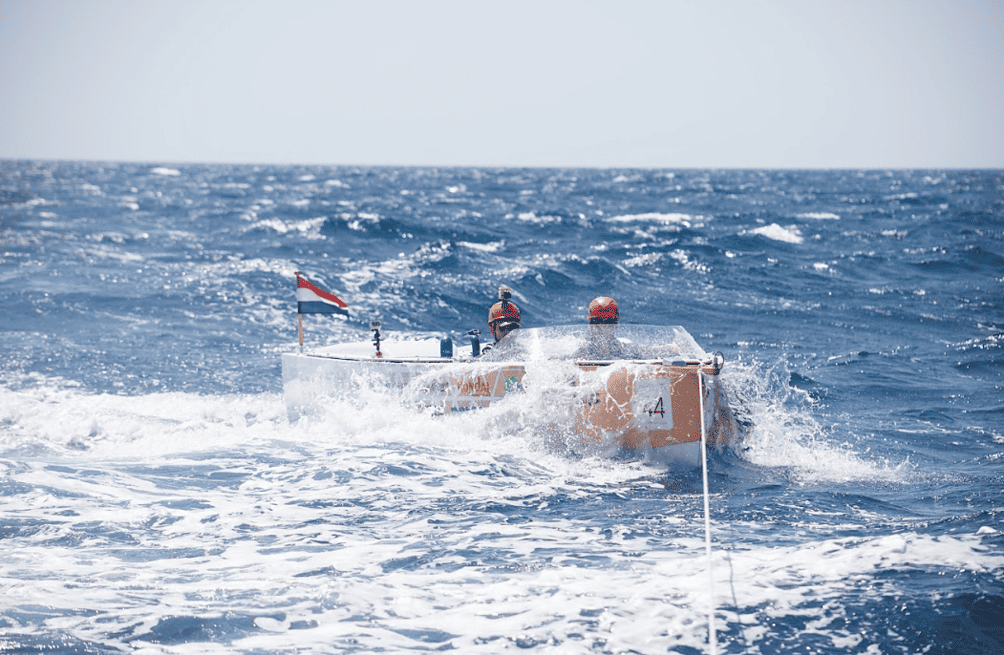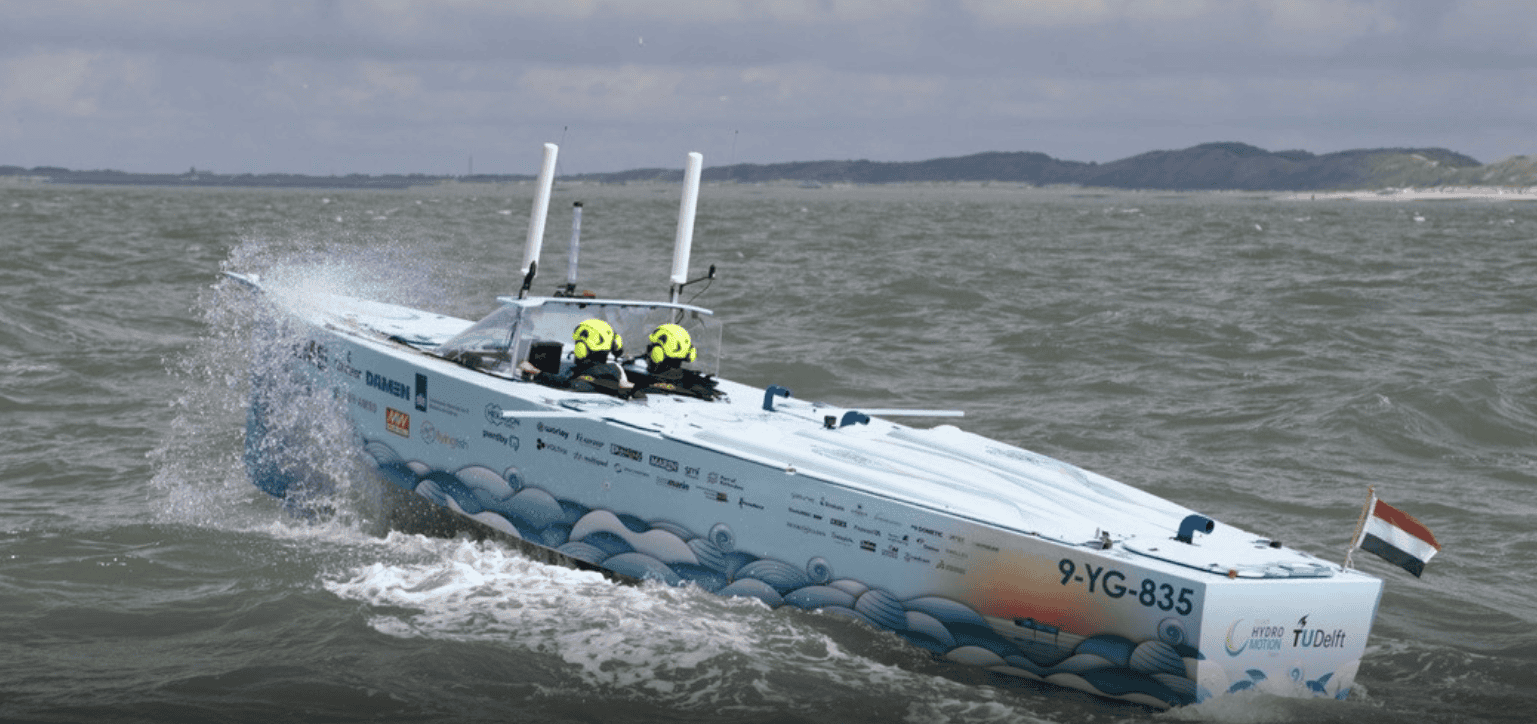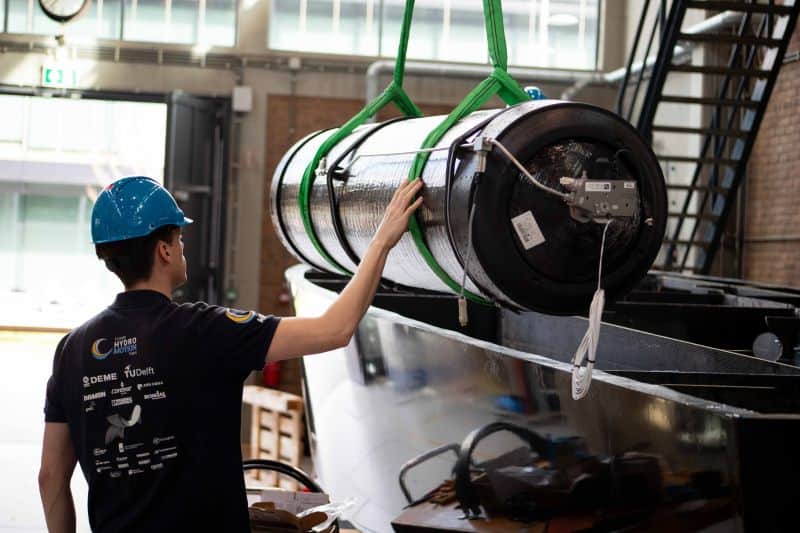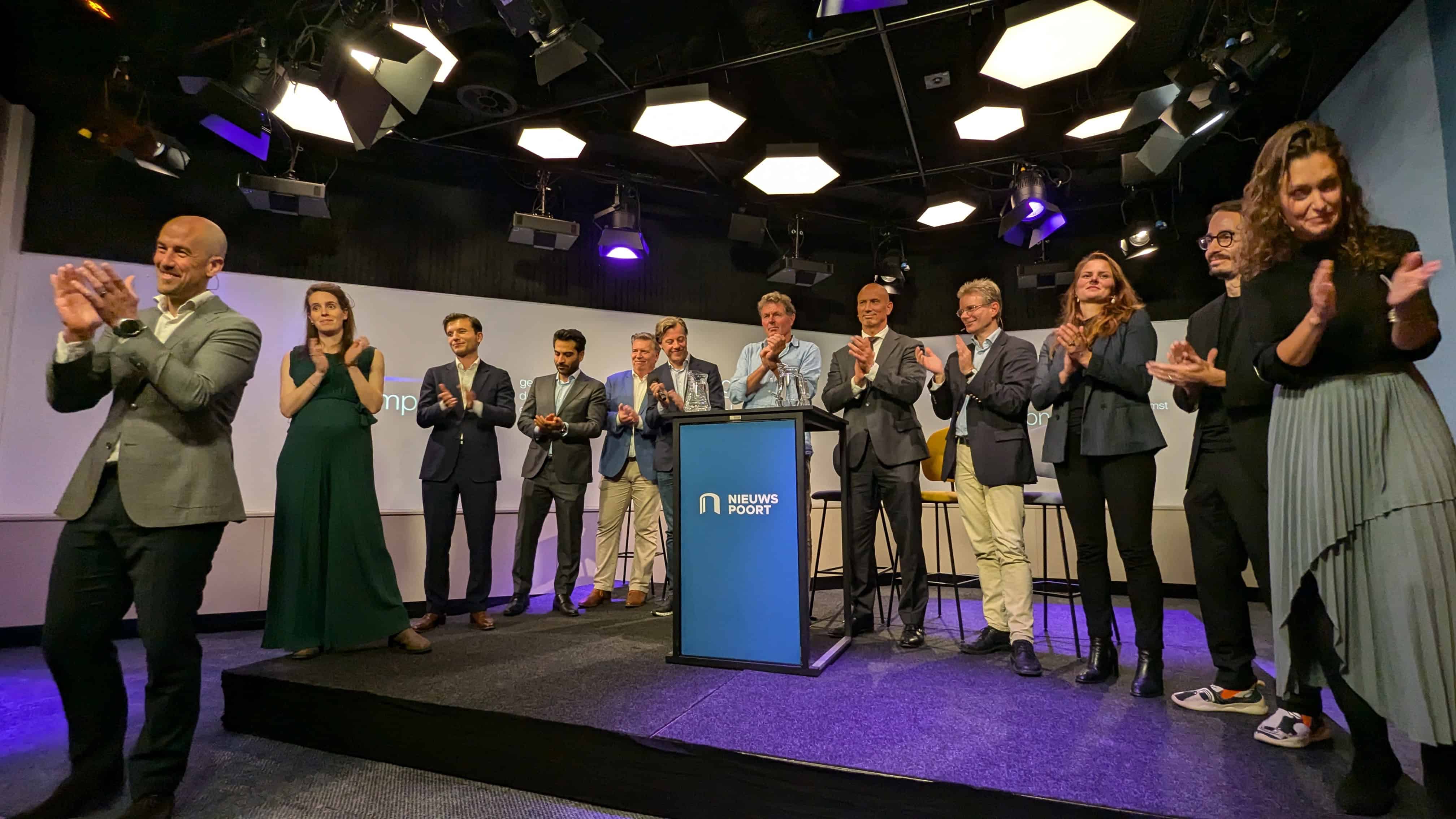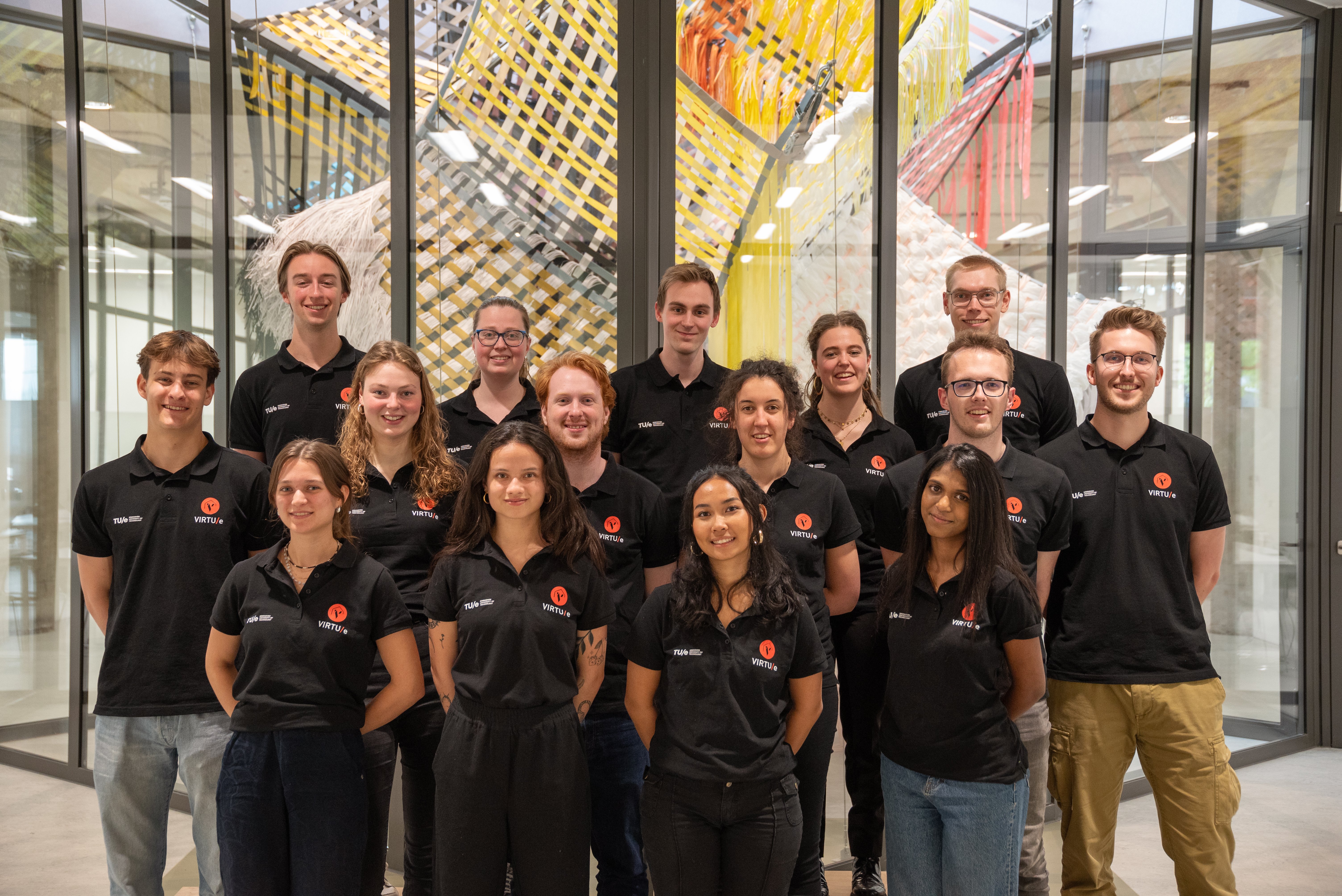
Delft University of Technology’s Hydro Motion Team has become world champion with its foiling hydrogen boat. The team, consisting of 23 students, designed, built, tested, and won the Monaco Open Sea Class 2023 within one year.
- TU Delft’s Hydro Motion Team became world champions in Monaco with a ‘foiling’ hydrogen boat
- Despite high waves and a failure in the speed test, all other teams were defeated.
- According to the students, this shows the potential of hydrogen in the maritime world.
The Monaco Energy Boat Challenge is an international competition that brings together innovative solutions in renewable energy and the maritime industry. The student team traveled to Monaco, where there were competitions on speed, maneuverability, and endurance.
Maneuverability Challenge
The first challenge for the student team was the Maneuverability Challenge. The team had to navigate a difficult course in the harbor in this component. In this task, the emphasis was on the boat’s maneuverable design combined with the pilot’s precision and agility. The Delft team finished second with 3 minutes and 9 seconds. The team’s success in this event shows not only the skills of the pilot, but also the maneuverability and controllability of their craft.
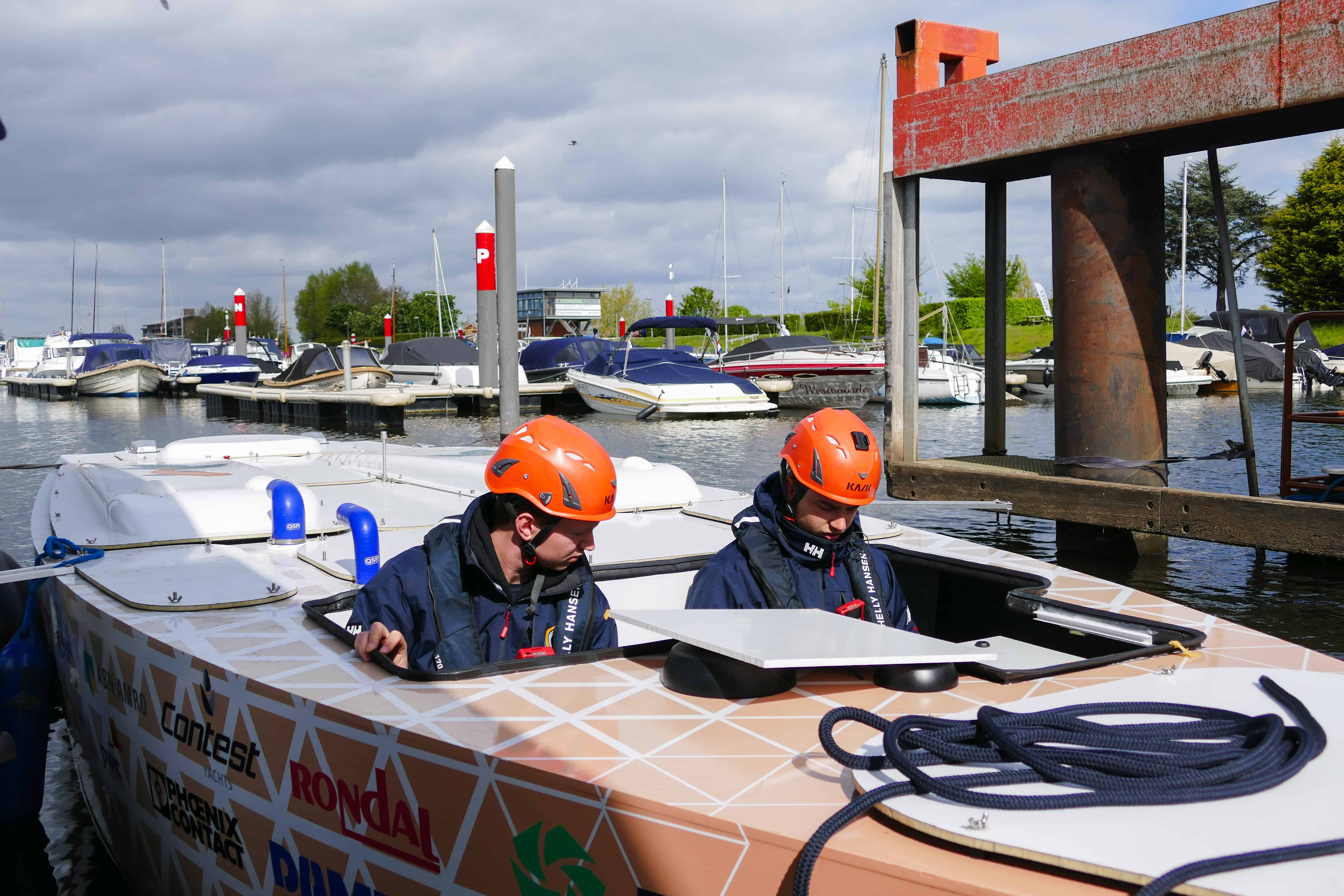
Endurance Challenge
In the endurance competition, the team had to cover as much distance as possible for four hours by sailing as many laps as possible on the open sea. This race allowed the students to demonstrate the potential of hydrogen over batteries. However, after more than two hours, the wind picked up, and high waves appeared. Both the Delft and most commercial boats struggled with the waves. Eventually, therefore, most teams, including the team from Delft, chose to pull back to port. The 14 laps (78 kilometers) the students had sailed at that point were enough to become first.
Speed Challenge
The final event was the Speed Challenge. This competition was a big challenge for the team, as batteries can more easily release energy quickly than hydrogen fuel cells. The boats had to cover sixteen nautical miles as fast as possible, which is about 30 kilometers. Due to the high waves, the water incessantly flowed into the boat, and soon technical problems arose. The boat eventually had to be towed back to the harbor for an inspection. After consulting with the race management, it was decided not to sail out again.
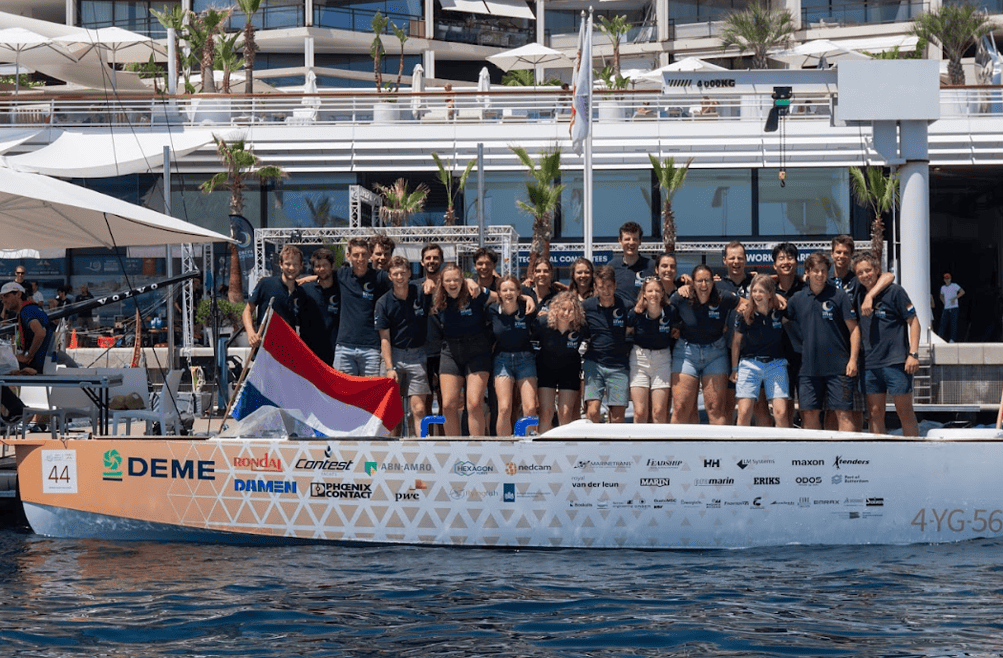
However, the performance of the previous days was enough to become world champion. “With this achievement, we showed that a team of driven students can design, build, test, and successfully race a foiling hydrogen boat in one year,” said one of the team members. “And what the potential is of hydrogen in the maritime sector.”
This is not the first time Delft students have built a hydrogen boat. By making a lighter and more efficient boat this year than last year, hydrogen could be used more efficiently. “Especially for longer distances, a hydrogen boat is much more suitable than, for example, a battery-powered boat; this was visible during the Endurance Challenge. We also worked on the hull shape this year, which was optimized by adding a so-called ‘chine’. A chine provides less resistance and helps the boat come out of the water more smoothly.”
Foil
The boat foils this year to sail faster on less fuel. Important for this are the hydrofoils under the boat. From 25 km/h, the boat rises out of the water, and only the hydrofoils and propeller are underwater. Because the boat flies above the water, so to speak, the resistance decreases considerably, making the boat sail more efficiently. Winglets have also been added to the end of the hydrofoils this year, making the boat experience even less resistance and, thus, more efficient.
